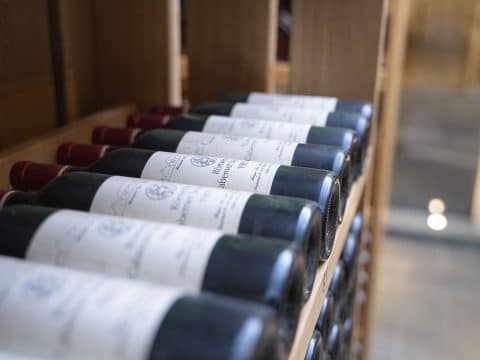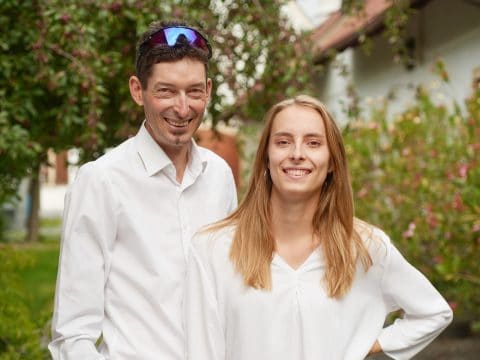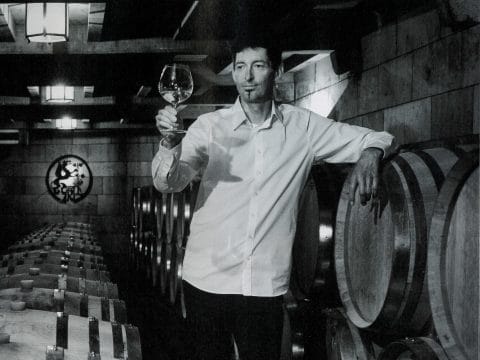Glamour and Gloria – with a few fickle friends…
Press
A somewhat modest top flight, with some magnificent wines but remarkable bottle-variation as well—this characterises our tasting of the current vintages 2010 and 2009, as well as a couple stragglers from 2008.
For the most part, the established specialists took the top places—the brilliant winner is the splendid Chardonnay Gloria 2009 from the Kollwentz Estate.
When the serious reserve bottlings are concerned, one admittedly does not encounter elegant Austrian white wines from the Pinot family as often as a confirmed fan of Chardonnay, Weissburgunder and Grauburgunder would like. At the same time, the best Austrian wines in this category offer all that a winelover could desire: elegant fruit, characterful expressions of heritage and vineyard site—as well as serious cellaring potential.
The air at the top is indeed thin—this is especially true of Austrian whites made from Pinot-family grapes in the reserve category. It’s not really surprising that the best wines this year came from the established specialists, mostly prominent wineries with years of engagement with the varieties and terroirs that yield the best results. But there are a couple of newcomers who caused us to sit up and take notice—and we hope that these folks’ current achievements do not turn out to be just one-hit wonders.
And once more we return to Grosshöflein…
If we predicted last year in these pages that the champion wine Chardonnay Tatschler 2009 from Kollwentz was going to have some strong competition from its own stable, then this year’s results have served to fully confirm our forecast. The 2009 Chardonnay Gloria made a particularly brilliant impression in the final round of tastings this year; seldom has any white Austrian Pinot been rated so highly in a Vinaria tasting. Second place on this occasion goes to the Alphart Estate, one of the leading producers in the Thermenregion, who have for years now attracted attention with their expressive Chardonnays—the 2009 Reserve was very impressive and totally convincing. Third place went to Kollwentz as well, this time for the Chardonnay Tatschler 2010—a stellar achievement given the difficult nature of the vintage. Separated by some tenths of a point, the prominent Styrians closed ranks—Erich and Walter Polz shone with a very precise Morillon Obegg, while Skoff Original made the grade with their animated and lively Weissburgunder from Grassnitzburg. Next followed an elegant Chardonnay from the Bründlmayer estate and the much-improved Chardonnay Lama from Esterházy Wein. The delicate Chardonnay Zieregg from Tement and the impressive Wieninger Grand Select proved noteworthy, followed by classics like the Chardonnay Floss from Leth, or the very successful blend of Chardonnay and Neuburger from Martin Arndorfer. One very pleasant surprise was a barrel-sample from Weingut Hirschmugl; here’s hoping that it’s just as fine once it is released. A couple top candidates showed themselves unfortunately out of form, and were not scored—neither the 2009 Morillon Pfarrweingarten from Sattlerhof nor the 2009 Chardonnay from Schloss Halbturn could be evaluated accurately.
A glance at those topping the list offered a surprise: an unexpected presence of the 2010 vintage wines. To be sure, this doesn’t lead to the conclusion that 2010 would outdo 2009 in terms of quality; first, several of the premium white 2009 Pinots were on stage last year, and second, the 2010s are clearly not up to the 09s in quality, as the comparatively modest point-scores indicated. Despite this, we were expecting more here and there from the 2009s submitted for this round of tasting, and were pleasantly surprised by the vitality of some 2010s, which at best showed the vintage-typical pizazz and animation that one expected, but could also deliver weight and balance. And some of the 2009ers raised the question: What has become of the elegance and harmony of the vintage? Instead: middling structure, lactic notes and a tendency toward coarseness. This year’s tasting demanded patience as well, since many wines showed themselves clearly in need of air, and plenty of time in the glass. And some wines brought forth little in the way of expressive fruit despite plenty of air and coaxing, while on the other hand some—from Sausal (Hirschmugl and Wolmuth, for example)—profited significantly from time in the glass. Residual sugar also became a theme for discussion: some candidates were more charming and inviting with their residual sugar, while too much of it could prove deadly; some wines would’ve been better off wearing a little less makeup. Of course the opposite could be observed as well, namely that austere bone-dry Pinots sometimes came off—especially in the finish—as rather rustic and somewhat too short.
Stylistic diversity, severe bottle variation…
So we are obliged to report for the Pinot Family Whites, Reserve Category: the character of the wines could not be more varied—on one extreme the firm and mineral-driven (riding the red line of reductiveness) Zierreg from Tement, and on the other Wieninger’s generous and voluptuous Grand Select, to name two prominent examples. Both are very successful wines, no question; but explaining to somebody without a great deal of familiarity with the material what Austrian Chardonnay is all about is difficult, since between these two extremes there are dozens of different interpretations in the bottle. In the best case, the domestic Pinot reserves make their case with elegance, aging potential and individuality. In the worst instance, the bottle is flawed, marred by cork or some other negative influence. A solid quarter of the samples submitted (!) found doubts arising, and had to be compared to a second bottle—and some wines even needed a third bottle to show themselves accurately. This sort of bottle variation poses a distinct challenge for experts at a professional tasting—in a restaurant at lunch or dinner these situations would provide neither the sommelier nor the diners with a pleasant memory.


